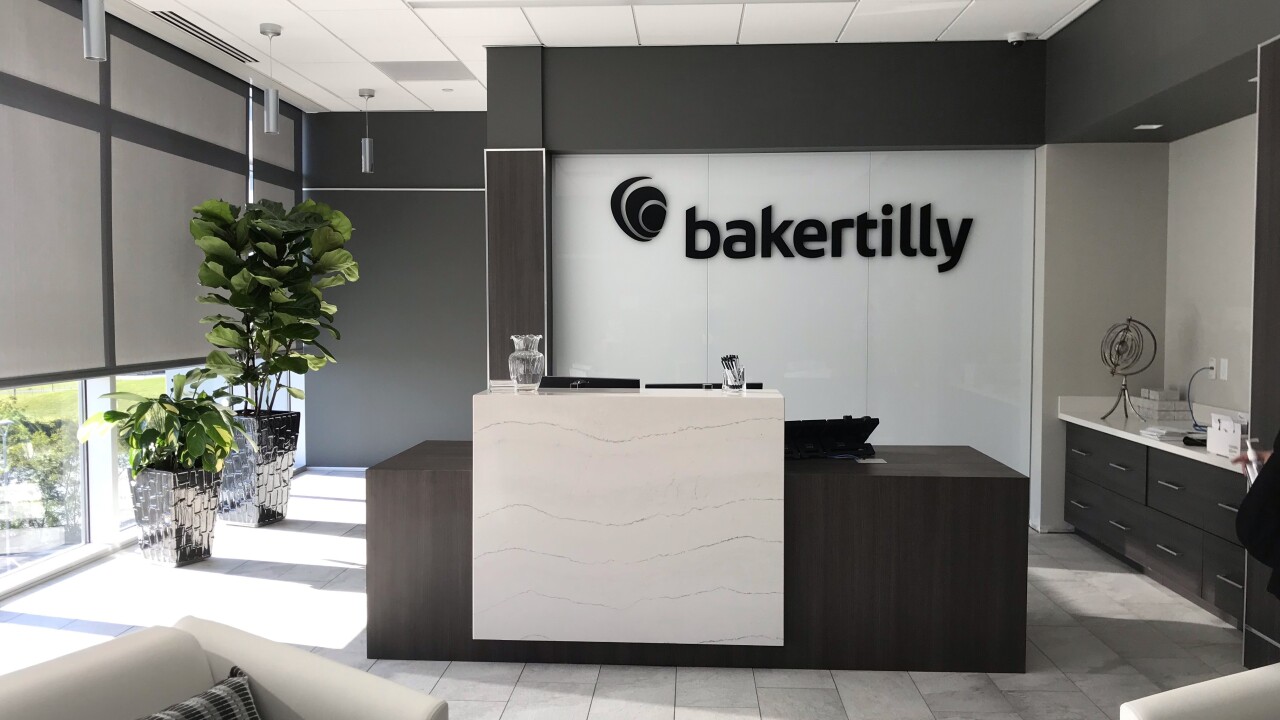Growth, on the surface, is what every firm leader wants. More revenue, more profits, more employees. That's the dream, right?
Here's the thing, though: Not everyone's dream looks the same. Growth, it turns out, is not a one-size-fits-all approach. Not only does the definition differ from business to business, but so do the strategies for reaching that goal. Growth is also complicated, particularly for small accounting firms.
A leader looking to level up from a small staff of less than 10, for instance, may find the systems and leadership approaches that worked before have suddenly stopped working. And that's when growth stalls out.
This period between eight and 20 employees is often a firm's first scaling plateau. It's the point at which the organization has maximized its potential within its current operational structure, team design, market focus, or leadership skills capabilities. It is a critical period of growth that can make or break any accounting firm. The key to breaking through is to:
- Understand that this plateau exists;
- Determine what you as a leader truly want from your firm;
- Map out the organizational design of your future firm; and,
- Build the necessary scaffolding to support that design as the firm moves through its growth phases.
Here's how to anticipate and overcome the challenges of this frustrating first scaling plateau and to achieve the kind of growth that makes sense for you and your firm.
Hitting the wall: why it's hard to scale beyond eight employees
I've worked with and
Key metrics like revenue per employee, productivity and profitability all seemed to drop as staff size grew. Sometimes this would cause them to put a hold on growth and shrink back down, and suddenly those metrics would pick up again. But they were always hitting a wall as they looked to move through that magic zone between eight and 20 employees.
What was happening? The dynamics of the team were changing. Most firms with eight or fewer employees run as a very flat organizational structure. But as they move above that number, they probably need to bring in someone to help manage the staff, resulting in a kind of hybrid structure in the higher range.
Get a little bigger than that and the new management layer can get more complicated. Maybe some of the new people aren't as adept at leading, for example. Now a lot of time and energy is spent on managing the team and trying to find the right manager-to-staff ratio instead of focusing solely on business growth like in the old days.
Beyond 20 employees, an organization begins to look more naturally hierarchical. Responsibilities become clarified. Strong leaders emerge. Individual departments can function efficiently and productively both within themselves and as part of the larger whole. The firm no longer looks the way it used to, but the new way makes sense.
It's in that eight to 20 range where things get muddled. This is the scaling plateau that most growing firms tend to hit. It's a time to really evaluate organizational strategy and design to find a purposeful and sustainable path forward. Unfortunately, many firms try to stick with what they've always done and plow through these challenges.
And that's when they hit the wall and their growth trajectory gets derailed.
Recognizing the signs: lower productivity, less visibility, falling profit margins
I've talked to plenty of firm leaders who have seen these things happen, and they all tend to express variations on the same general sentiment:
- "The business I started doesn't feel like the business I'm running today."
- "I used to have my hands across everything, and now I'm not sure where things are anymore."
- "The people on my team used to be a lot more productive than they are now."
Undergirding these kinds of statements are a number of common questions they're running into, such as:
- Why are client issues happening and why am I not aware of them sooner?
- Why is the profit margin dropping when it has been steadily increasing over the past few years?
- Why does it seem like our team is getting lazier and less productive?
- Why don't I have enough time to work directly with clients?
- Why do I feel like my staff is unhappy and looking to leave?
- I've never experienced these problems before, so why is all of this happening now?
It becomes a point of disconnection that threatens the confidence of many firm leaders. The organization isn't operating the way they expect it to and they don't know what to do about it.
Righting the ship: defining growth, understanding how to get there, and pursuing it deliberately
The problem is twofold. On one side, most leaders never take the time to really examine what's going on in their firms. They know something's not working, but they just forge ahead and hope the issues will work themselves out. Those leaders who do opt for some reflection, on the other hand, often don't have these types of epiphanies until their firm has already run aground.
So the first step to righting the ship is simply taking the time to acknowledge the problems and understand what your firm is up against. From there, you can start to course correct by doing three things:
- Define what you want from your firm. How big do you want to be? What kind of culture are you trying to have? Is the sweet spot a lean-and-mean organization that sits comfortably between about 12 and 16 employees? Or are you looking to build a bigger firm with more people and more moving parts?
- Understand what's needed for growth. If you're really looking to grow, is your firm structured to support that goal? Do your resources and capacity match your forecasted revenue? Keep in mind that it's not just about bringing in a bunch of new people; it's about making sure the people you do bring in are filling the critical needs your growth is going to demand.
- Be deliberate about operational management. A growing firm has a lot more bodies that need to start rowing the boat collectively. That means you need to be more thoughtful about things like the kind of work those people are trying to do, the processes they need to support that work, and the training they need to be successful.
Bridge the gap between goals and growth
Is bigger always better?
When it comes to facing the wall between eight and 20 employees, that's the overriding question that firm leaders need to ask themselves. As an entrepreneur, you want to maximize your firm's profitability. But are you viewing that goal through the proper lens?
One of the things I've learned in talking with hundreds of leaders over the years is that growth and success look very different from firm to firm. For one owner, building a big team to handle more clients and offer more services might be the goal. For another, promoting a healthy work-life balance might be more important than adding more people.
In the end, the objective should be to build the right company based on your own parameters. That's a unique thing for every business. And that's what you need to figure out as a firm leader in order to determine where your ultimate happiness lies.





